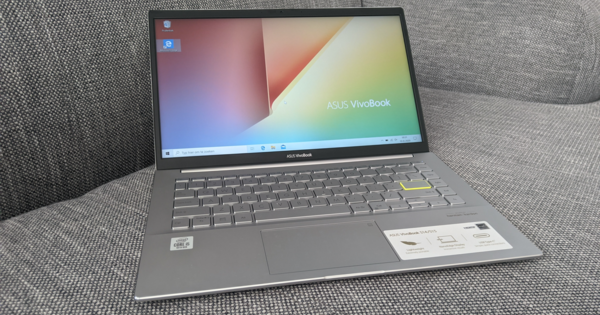Put children behind a screen and the hours will fly by – while children between 6 and 8 years are advised to sit in front of a television, computer, smartphone, tablet and game console for a maximum of one hour a day. Keeping an eye on screen usage is difficult, but luckily most gadgets have options for this on board. We take you through popular gadgets and see how they help you limit screen time.
Children are exposed to the attraction of screens on televisions, computers, tablets and mobile phones from an early age. Experts are still unsure about the long-term effect of overusing screen devices. That is why it is better to handle it with care and make clear agreements with your children about the online and offline activities. Besides, isn't it much more fun to go on your own adventure than watching vlogs for hours on end?
How much screen time for my child?
According to the Netherlands Youth Institute, children up to the age of 6 spend an average of 106 minutes in front of a smartphone or tablet every day. It's hard to give accurate advice about screen time. The time that is advised strongly depends on the age of the child. Its use has both advantages and disadvantages and every child is different. Many educators start early, because even the littlest ones can easily operate a touchscreen and it calms them down. The iPad is an everyday object in playgroups and schools. Media education therefore starts at a very early age. The website of the Netherlands Youth Institute contains an extensive toolbox with checklists and tips per age. Thus, imposing restrictions as described in this course may not even be necessary.

01 Windows 10 and Xbox
Microsoft has long been facilitating restriction of PC use by children. That started with their 'Family Safety' service and has been further expanded for Windows 10. The service is now quite mature and data is captured not only per computer, but also online between Windows 10 systems and Xbox systems. This way you can keep an eye on both the Xbox and the Windows 10 systems from a website. To register an account for your child, go here. After entering the date of birth, confirmation is required from one of the parents. click on My parent can now sign up to confirm the account with your own email address. After confirmation, the child account is automatically added to a family group.

02 Sign in Xbox and PC
Now the account can be used to login to the computer. On a Windows 10 PC, you simply log in with your own account. Go to Institutions (Windows key+I) and click Accounts. Open Family and other users. Select under Your family the child's account and click the button To allow. The child can now sign in from the lock screen. To sign up the account on an Xbox One, press the Xbox button and select the gamer image (top left corner). Then choose Add new and enter the child's account information to sign it in to the Xbox One.

03 Screen Time Xbox and PC
Now that the accounts are set up on the PC and Xbox, the screen times can be configured. Go here and log in with the parent account. This page contains an overview of all family members. Click above one of the child accounts screen time. You can use a schedule for both the Xbox One and Windows 10. Put the button below Use a schedule for all devices on On. In the overview you can add the days and times when the child is allowed to use the devices. Also can a Time limit be set. In this way, the child can decide for itself when the hours are spent. To set the limits for Windows 10 and Xbox One separately, move the buttons behind Xbox One and Windows 10 to the right.

04 Android with Family Link
With Family Link you not only keep an eye on things, you can also set daily limits and automatically lock the child's smartphone at set times. Google's Family Link does require a smartphone with Android 7.0 or higher. You also need a credit card to prove that you are indeed a parent. Install the Family Link app on the device. The app for the parent can be found here and if the child already has an Android device with an account, you can also install Family Link for children and teens on his or her device.
Microsoft Launcher on Android
Although Microsoft Launcher is not a real replacement for Google's Family Link, it does allow you to register which apps your child uses and how much time your child spends on the device. Microsoft Launcher is a good alternative for older smartphones: Android version 5.0 is sufficient for those who want to use the Screen Time function. The app can be found in the Play Store. Just like with Windows 10 and the Xbox One, your child must have their own account that is signed in to the family to use screen time. You can then use that account to sign the child into Microsoft Launcher. Give the necessary permissions and install Microsoft Edge to also be able to protect the browser. Unfortunately, Microsoft Launcher does not allow you to impose restrictions.

05 Set up Family Link
Start the parent app first and go through the requested steps. Finally, you will be asked whether the child already has an account or whether an account needs to be created. In the first case, you can link the devices and accounts to each other by means of a code. Then open Family Link for Kids and Teens on the child's device. Go through the requested steps and enter the setup code from the Family Link app for parents. Follow the steps to add the account to the Family Library and agree to the terms of service. It is wise to go through these steps together with your child, so that your child knows that you can watch and is aware of the restrictions.
06 Family Link Day Limits

If the accounts are correctly linked, you can now set daily limits and bedtimes on the parent's device. Open the Family Link app and access the child's account. Search for screen time and tap Set up. Under the tab daily limit the maximum time that the child can use the device can be set. Tap the button behind Just planned to enable the limits. You can set the times at which the device can be used via the Bedtime tab. For example, you can lock the device automatically between 8:00 PM and 8:00 AM. Tap the button behind Not planned to enable the limits.
07 Playstation 4
Playtime can also be set on the PlayStation 4 via a child account. To create a child account, click on on the home screen New user. Choose Create a user and go to Next one to create a PlayStation Network account. Go through the requested steps and eventually you will be asked to have the family manager log in to confirm the account. During these steps you will also be asked to set playing restrictions. Choose behind Playtime Restrictions for the option To limit and possibly as a consequence below Sign out of PS4. The time can be set per week. When the settings have been saved and the account has been added, the child can log in to his or her own account. You can change the times afterwards via the account of the family manager. Go on his account to Settings / Parental Controls / Family Management and select the account you want to modify.

08 Screen Time on iOS
Screen Time is a new feature for iOS 12 that allows you to keep track of how much time your child spends on the iPad and its applications. Time limits can also be set. Once your child's device is configured, you can Share with family view reports and adjust settings from your own Apple device. Children under 13 cannot create their own Apple ID and must always be members of a family.
09 Sharing with family
To enable family sharing, go to Institutions and tap your name. Then tap Share with family and To work. Follow the on-screen instructions to configure the family group. When the group is created you can create an ID for a child under 13 years old. Go to Institutions and tap your name. Choose Share with family and open Add family member. Tap on Create account for child and go to Next one. Enter the correct date of birth and go through the desired steps. Make sure you Ask to buy to prevent your child from making unlimited purchases.

10 Set Screen Time
To enable Screen Time on iPhone, iPad, or iPod Touch, go to Institutions and open you screen time. Tap on Switch screen time in and Continue. Choose who uses the device. If the device is only used by the child, you can configure the screen time and make settings on the device itself. This can also be done later from your own device. Screen Time also allows a passcode to be applied so that you are the only one who can allocate extra time. Go to Settings / Screen Time and tap your child's name. Tap on Change Screen Time Passcode. Viewing reports and setting the limits can be done under Settings / Screen Time. By tapping on the chart you can set limits. Limits are divided into Device Free Time, App Limits, Always Allowed, and Content & Privacy Restrictions.

11 Nintendo Switch

The Nintendo Switch is the worthy successor to the Nintendo Wii and the Nintendo 3DS. The device is incredibly popular with children, but Nintendo has also taken the parents into account. Through a handy app you can easily keep an eye on what kind of games your child plays and how much time your child spends on the games. You can also set playing time and limits. You can choose to show only a notification or have the device go into sleep mode automatically. The app can be downloaded for both Android and iOS.
12 Supervision Switch
Once the app is installed, sign in with your Nintendo Account. click on Next one and a registration code is generated. On the Switch, go to System Settings / Parental Controls and tap Parental supervision. Press the button If you have already downloaded the app and tap Enter registration code. Enter the app registration code and tap To link. The message that the Switch has been registered will automatically appear on the smartphone. Via the button Set playing time you can directly determine the playing time. After that, a restriction level can also be set if necessary. Under the tab Institutions can you on Play time limit tap to find the weekly schedule option. If you want the software to be turned off automatically when the time is up, turn the button below Pause software to the right.


